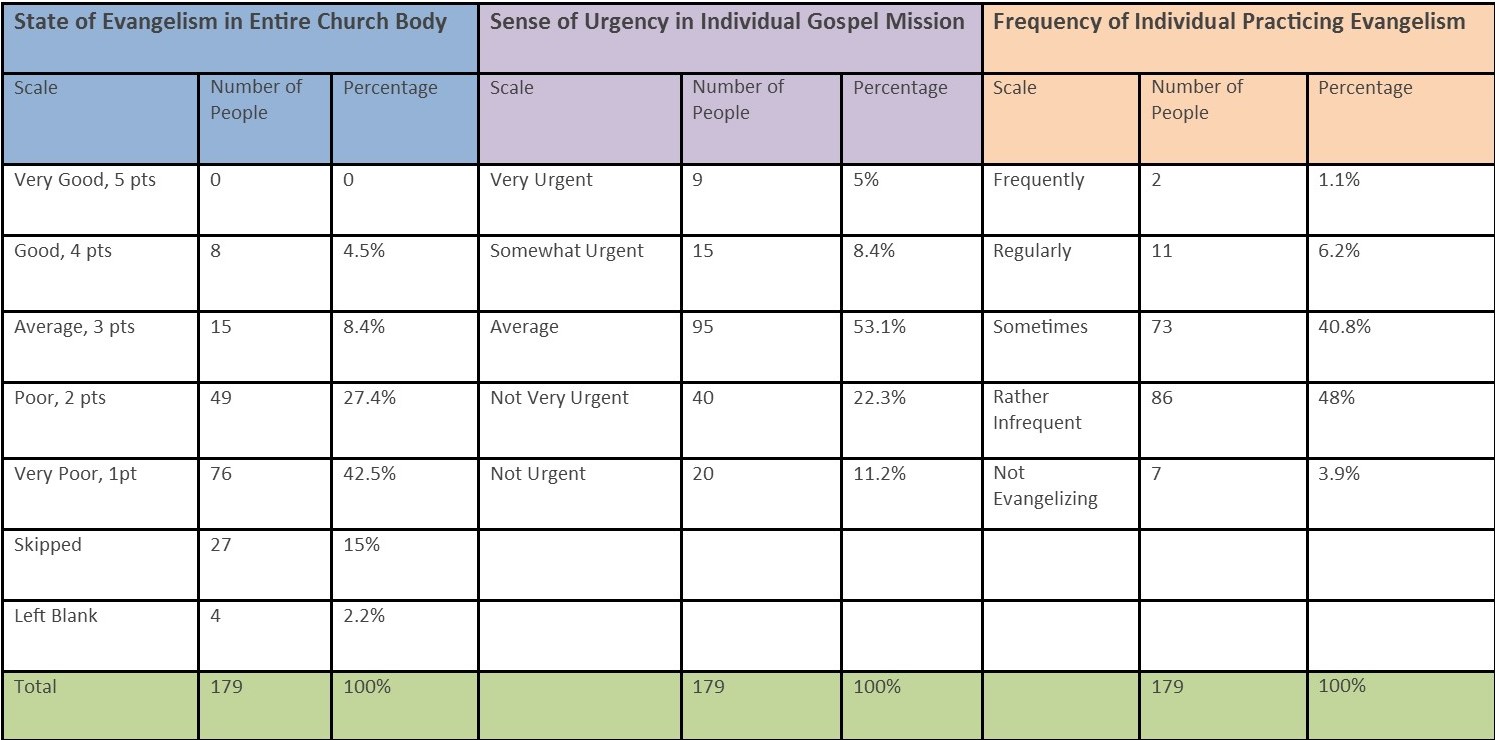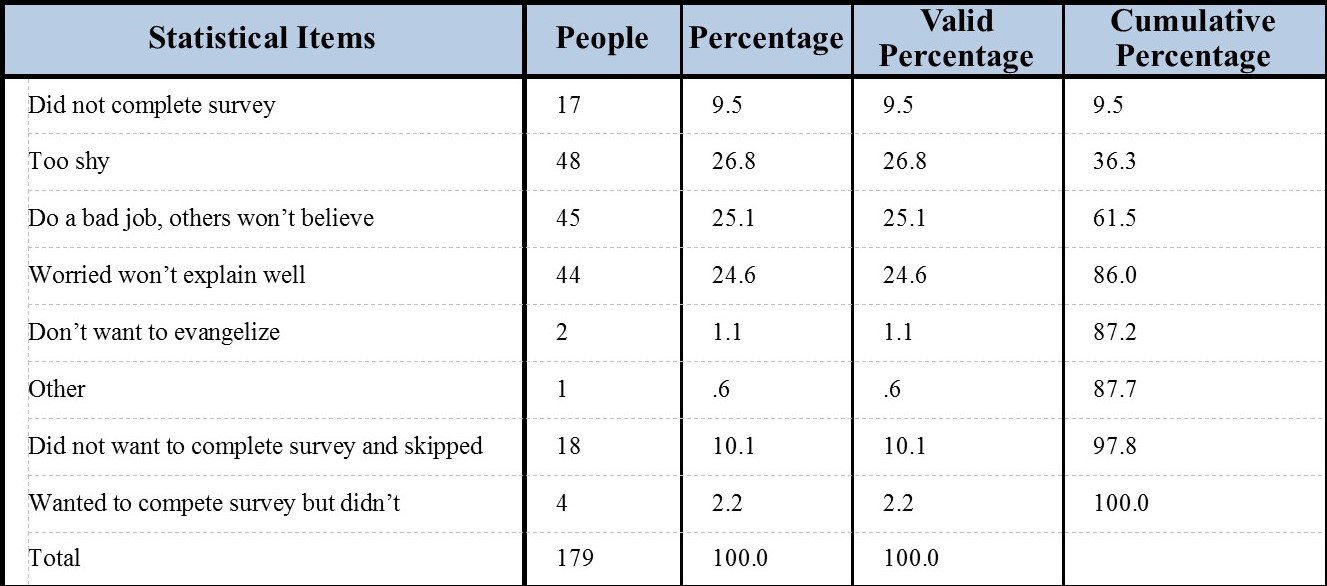A growing movement of churches attracted to the Reformed faith is gaining steam in China. Although still comparatively small in number, these churches and several of their prominent leaders are gaining influence among Christians across China.
This article, originally published in the journal ChurchChina, provides hard data on how Reformed theology has impacted the evangelistic efforts and gospel understanding of one church in Anhui province. This case study seeks to answer the question: How has Reformed theology impacted the spread of the gospel in “Y” Church? The author not only describes his field research, but also sheds light onto the complications of church life in general for Christians in China.
Due to the length of this article we will publish it in three parts. The first part of the article discusses the current situation of “Y Church.” The second part will describe in more detail how the research findings describe the impact of Reformed theology on Y Church’s evangelism. The third part will give recommendations for Y Church’s evangelism. This is part one.
The Impact of Reformed Theology on the Church's Gospel Ministry–A Case Study of "Y" Church's Evangelism
On August 22, 2016,the blog Gift of the Magi posted Li Cheng's article, "At Least 10 Major Ways Reformed People Can Learn from Non-Reformed People." The article drew on Frame’s statement, "In recent years, American conservative Reformed churches were not very strong in terms of evangelism. They always call out the Arminians for not sharing the gospel correctly, but they don't share enough themselves. In terms of enthusiasm for spreading the gospel, we should learn from Arminians.[1] After reading that article, I wanted to see what the passion and urgency for sharing the gospel were like among Christians at a church influenced by the Reformed faith in Wuhu, Anhui. Therefore, I designed a number of questionnaires by which church members could tell us what they truly thought about how they were doing. The table below shows final numbers from the evangelism questionnaires.

I divided the table above into three sections: "State of Evangelism in Entire Church Body," "Sense of Urgency in Individual Gospel Mission," and "Frequency of Individual Practicing Evangelism." I gave each questionnaire to the exact same target group. The resulting data is not a positive outlook for the mainland Reformed church in terms of evangelism. Some people even believe that Reformed theology will lead to a weakening of the gospel. The data show that only 4.5% of people believe the entire church body evangelizes well. Only 13.4% of members sense a call to personal evangelism, and only 7.3% personally evangelize regularly. Based on these three statistics, I, too, believe the Reformed church is rather weak in terms of evangelism. The older generations of Reformed Christians were very fervent in evangelism. But, today's situation is a bit sad.
This article will primarily discuss the Reformed characteristics of Y Church. First, I will discuss and analyze the context of Y Church and the impact of Reformed theology on the church in terms of evangelism. Afterwards I will give a few recommendations.
The Impact of Y Church's Current Situation on Its Evangelism
1. Persecution of student fellowship keeps people at arm's length.
Y Church started as a university student fellowship. Half of the group are on-campus students and half are members (and their families) who graduated in the past ten years. To students, the campus itself is their gospel threshing floor. In theory, evangelizing is relatively easy. But the government and Anhui Normal University both carry out "persecution" against Y Church. They do not allow Y Church to set up meeting points around the campus, nor do they allow them to set up small groups on campus, nor do they allow them to evangelize at school. Yu Guosheng, the department head of Anhui Normal University's United Front Work Department, wrote reports to each of the universities and colleges in Wuhu. He used "harm of illegal religion against the state" as a reason to attack so-called illegal religions. So, pressure from top college and university leadership to instructors and even to class cadres turned formerly enthusiastic members, one after another, into slack evangelizers. This is one reason for not daring to evangelize.
2. The bulk of people in the church are "modernists" whose preference for the rational thinking of Reformed theology has led to a weakening in practice.
Most of the people in Y Church were born in the 60s, 70s, or 80s. They have been influenced by modernist thinking, which stresses rationality, objectivity, systematization, etc. The emphasis on rationality in Reformed theology satisfies the modernists' comprehension of faith. The classic Reformed works, such as John Calvin's Institutes of the Christian Religion, Wilhelmus à Brakel's The Christian's Reasonable Service, and Herman Bavinck's Our Reasonable Faith help modernists cast off the label of "superstition" from religion. The church made every effort through biblical theology and systematic theology to satisfy the modernists' longings. This sort of teaching has its benefits, but it also leads to weak practice and evangelism.
3. The church is busy with "the harvest" and dedicated to teaching church members while ignoring evangelism.
When China joined the WTO in 2001, the pace of urbanization accelerated enormously and large numbers of migrant farmers made for the cities in search of work. Anhui and Henan provinces, among others, became big sources of migrant workers. The two regions experienced massive Christian revivals following the Reform and Opening policies [of the late 1970s]. So with urbanization, the influx of workers as well as the post-80s and 90s Christian university students, the number of urban Christians skyrocketed. To a large degree this was due to rural Christians moving into the cities. As a result, many churches were busy with this "harvest" of Christians. Comparatively speaking, churches are more willing to minister to people with an existing foundation than evangelize seekers.
On the other hand, people moving to the cities are very transient. Even though students are in a city for two to four years, every summer break they go home. Migrant workers go back every Chinese New Year or during busy farming seasons. So, churches pay more attention to strengthening pastoral care. In a positive sense, the urban church is working to firm up the faith of believers. Pastoring then is for believers of the congregation. Church growth not only has to do with what is seen, but with what is unseen. But, in a negative sense, only concerning itself with the "harvest" of believers makes the church unable to free itself to focus more on evangelism.
4. Little guidance on evangelism methods from the church
Looking at the numbers, 69.9% of the people think the church suffers in its evangelism due to a lack of organization; 40.8% say they personally seldom evangelize; 51.9% of the people say they somewhat to never evangelize. Regardless of whether it is the church as a whole or individuals that are in view, neither is positive in terms of evangelism. Other "obstacles to evangelism" as shown from the questionnaire (see below) are that 26.8% of people are "too shy;" 25.1% of people "do a bad job and are too afraid to share;" 24.6% of people "are worried they won't explain well." This data suggests that the church lacks teaching and training in evangelism communication and methods. This has led to members without courage, who lack confidence, and are too afraid to share the gospel.

5. Small group-type churches promote "inward-oriented relationships" that hinder evangelism.
(1) Persecution leads to a small group-type development of the church.
Y Church came under the watch of the government before the 2008 Olympics. They had no choice but to transition from a congregational church model to a small-scale cell group model. Later persecution forced them to more rapidly develop the church into small congregational fellowships, which is a small group model. Although all the groups belong to the larger church, in essence each group belongs to their small church. The small church advantage lies in an attractive cell group model of development that emphasizes relationships and care for others. That model enabled the church to develop from small and numerous churches ten years ago into a large church.
(2) An imbalance between inward development and outward evangelism leads to obstructions in gospel expansion.
Y Church's small congregations and small group model is similar to the average small church. According to Gary McIntosh's book One Size Doesn't Fit All, "Small churches have a relational orientation. If the relationships within a small church are healthy, exuding love and care, the church stands an excellent chance of growing through attraction."[2] In theory the best way to evangelize is if small churches make good use of "the attraction model." But, it could also be the case that this inward focus on relationships could prevent the seeker from getting close and integrating into the group. That's when this model turns into a gospel obstacle. As Gary McIntosh said, "The longer a church remains small, and the longer it is in existence, the more ingrown the fellowship structures become. The normal fellowship structures–groups, classes, circle–become so full they can never absorb outsiders."[3]
(3) Change of small group focus from evangelism to pastoral care
Y Church has been around for twelve years. After the church grew really big, the pastor gave more consideration to stabilizing pastoral care. He urged small groups to value building relationships and loving each other. Over time, the door to the gospel through powerfully attractive small groups was shut. Small group relationships shifted from attracting seekers to mutual "attraction" between members of the body. Acquaintances became more and more familiar while strangers had no way to integrate. If the attractive pull is targeted towards seekers, then it will produce gospel proclamation. If it's turned inward towards building up relationships, then it is easy to stabilize internal relationships and embrace the group: The situation becomes an obstruction to the gospel because outsiders are unable to integrate.
To be continued in part 2.
Author: Qiu Zhi, 2017-01-26
Original article: 改革宗神学对教会福音事工的影响 ——以Y教会为例谈传福音 (教会– ChurchChina)
Image credit: Chinese Bible by Wesley Fryer via Flickr.
Are you enjoying a cup of good coffee or fragrant tea while reading the latest ChinaSource post? Consider donating the cost of that “cuppa” to support our content so we can continue to serve you with the latest on Christianity in China.
